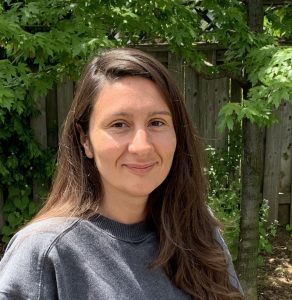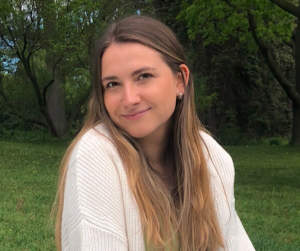by Caitlin Salvino
On June 23rd, 2022 the Supreme Court of Canada (SCC) released its decision in Attorney General of British Columbia v. Council of Canadians with Disabilities.[1] This ruling reaffirms the important role of public interest standing in systemic litigation and will have long lasting impacts on future Charter litigation.
Public Interest Standing
All cases heard by the courts require parties to have standing.[2] In most cases parties have private interest standing through a direct legal interest in the case.[3] In some cases, there are no parties with private interest standing and a party may apply for public interest standing to pursue the litigation. The courts have long recognised that there must be limitations on public interest standing to avoid over-burdening the courts, deter “busybody” litigants, and maintain the appropriate role of the courts within Canada’s constitutional democracy.[4] The courts have thus developed a test to determine whether public interest standing should be granted.[5]
The leading case on public interest standing is Canada v Downtown Eastside Sex Workers United Against Violence Society.[6] In Downtown Eastside Sex Workers, the SCC established that the court will consider three factors in assessing public interest standing: (1) if there is a serious and justiciable issue;[7] (2) if the claimant has a genuine interest in the proceedings ;[8] and (3) if the litigation is a reasonable and effective means to bring forward the challenge.[9] Furthermore, the SCC stipulated that these three public interest standing factors should not be assessed as a checklist. Instead, the factors should be assessed cumulatively through a purposeful and flexible interpretive approach.[10]
Council of Canadians with Disabilities and the Jurisprudence on Public Interest Standing
Despite the criteria laid out in Downtown Eastside Sex Workers, less than ten years later the SCC granted leave in Council of Canadians with Disabilities.[11] The Council of Canadians with Disabilities (CCD) had sought public interest standing to challenge the constitutionality of the British Columbia’s Health Care (Consent) Act, Mental Health Act and Representation Agreement Act. This combined legislative scheme permits the administration of psychiatric medical treatment to patients living with disabilities related to mental health and mental illness without their consent. Unlike all other forms of medical treatment, when a patient is being involuntarily held in a mental health facility, psychiatric treatment can be administered without the consent of the patient or the patient’s identified substitute decision-maker.[12] The CCD argued that this legislative scheme violated sections 7 and 15 of the Charter in a way that could not be justified under section 1.[13]
Initially, the constitutional challenge was brought by individuals with private interest standing who had undergone non-consensual psychiatric treatment. The CCD was supporting this litigation as a co-plaintiff. However, the individual plaintiffs subsequently withdrew from the proceedings after the Attorney General of British Columbia requested their medical records.[14] The CCD then pursued the Charter claims independently by seeking public interest standing, which the Attorney General of British Columbia challenged. At the court of first instance, the Attorney General’s summary trial motion was granted and the CCD was denied public interest standing.[15] On appeal, the British Columbia Court of Appeal granted the CCD public interest standing.[16] The case was then granted leave to appeal to the SCC.[17]
In Council of Canadians with Disabilities, the SCC unanimously reaffirmed the public interest standing analysis established in Downtown Eastside Sex Workers. This decision is significant because it addresses interpretive gaps that remained from Downtown Eastside Sex Workers and sends a strong message affirming the important role of public interest standing parties within Canada’s constitutional democracy.
First, the SCC in Council of Canadians with Disabilities provided additional guidance on the public interest standing analysis. The court rejected the CCD’s argument, and the Court of Appeal’s finding, that the principles of legality and access to justice should merit particular weight in the public interest standing analysis.[18] Instead, the SCC held that the principles of legality and access to justice permeate all three factors that a court must consider when deciding whether to grant public interest standing.[19] The principle of legality is linked to the rule of law by requiring that there are reasonable ways for individuals to challenge the legality of State action.[20] The principle of access to justice is symbiotically linked to public interest standing by providing an avenue to challenge the legality of State action and uphold the rule of law.[21] The SCC noted that the dual principles of legality and access to justice are most relevant to the consideration of the third factor in the public interest standing analysis[22] but cautioned against courts interpreting these principles as “hard and fast requirements or free-standing, independently operating tests”.[23]
Second, the SCC clarified the requirement of a sufficient factual setting for cases where parties are granted public interest standing. The SCC established that there is no strict requirement that public interest litigation always be in partnership with a directly affected co-plaintiff.[24] Such an interpretation would undermine the principles of legality and access to justice by creating barriers to litigation for marginalised populations. Instead, the SCC held that parties seeking public interest standing must “show that a sufficiently concrete and well-developed factual setting will be forthcoming at trial”.[25] The SCC reasoned that at the pre-liminary stages it is unnecessary for the party seeking public interest to provide trial-level evidence. However, the courts retain the ability to reconsider standing at any point of the proceeding if there is not a sufficient evidentiary record to conduct the trial.[26]
Finally, the SCC decision in Council of Canadians with Disabilities is significant because it represents a vindication of the public interest work of CCD, and uplifts the importance of public interest standing in systemic litigation. The CCD first filed the original notice of civil claim in 2016 and had been litigating the preliminary issue of standing for six years.[27] Rather than referring the case back to the British Columbia Supreme Court for re-consideration, the SCC granted the CCD public interest standing because “it is in the interests of justice”.[28]
This decision also sends a message to governments who seek to shut down public interest litigation on behalf of vulnerable populations at preliminary stages. The SCC makes clear that the threshold to establish public interest standing should not be onerous and should only be denied in limited circumstances. This message is in part demonstrated through the SCC’s decision to grant special costs in favour of the CCD.[29] Special costs requires the losing party to cover the full costs of the litigation and is much higher than the standard “party costs” that usually only cover 30% to 40% of the actual litigation costs incurred.[30] The SCC, through this decision and the awarding of special costs, sends a cautionary message to government’s considering challenging public interest litigation based on standing.
The David Asper Centre Intervention in Council of Canadians with Disabilities
The David Asper Centre for Constitutional Rights participated as an intervener in Council of Canadians with Disabilities. Through their intervention factum, the Asper Centre focused on the role of public interest standing as a mechanism in litigation pursuing a remedy under section 52(1) Constitution Act, 1982. Section 52(1), also known as the Constitution’s “supremacy clause”,[31] establishes that “any law that is inconsistent with the provisions of the Constitution is, to the extent of the inconsistency, of no force and effect”.[32] The Asper Centre argued that section 52(1) is a systemic remedy that does not require an individual plaintiff.[33] In their factum, the Asper Centre also highlighted challenges associated with class actions, which could become one of the only viable ways for parties to pursue litigation for Charter rights violations if public interest standing were to be restricted.[34]
In Council of Canadians with Disabilities, without referencing the Asper Centre, the SCC adopted its stance on the challenges associated with class actions as an alternative means to pursue litigation.[35] Following the release of the decision in Council of Canadians with Disabilities, the Asper Centre Executive Director Cheryl Milne shared that the SCC “listened to the submissions of the CCD and the Asper Centre, that relying upon class action litigation as a more effective means of bringing this claim forward is questionable. [The SCC] note[s] that class actions are ‘rife with unknowns,’ including the fact that their primary focus is on damages and not always the systemic issue raised by a public interest litigant”.[36]
Looking Ahead
The unanimous SCC decision in Council of Canadians with Disabilities reaffirms and fills the gaps in the existing jurisprudence on public interest standing. The SCC released a clear and decisive ruling on the importance of the parties with public interest standing pursuing systemic litigation on behalf of vulnerable populations. Moving forward, the decision Council of Canadians with Disabilities is likely to increase access to justice for vulnerable populations and ensure that potential State Charter infringements are accountable under the rule of law.
The Asper Centre intervention factum in Council of Canadians with Disabilities can be read here.
Caitlin Salvino is a JD Candidate at the Faculty of Law and is the Asper Centre’s 2022 summer Research Assistant.
[1] British Columbia (Attorney General) v Council of Canadians with Disabilities, 2022 SCC 27 [Council of Canadians with Disabilities].
[2] Canada (Attorney General) v Downtown Eastside Sex Workers United Against Violence Society, 2012 SCC 45, at para 1 [Downtown Eastside Sex Workers].
[3] Mia Reimers, “Constitutional Challenges: Public Interest Standing”, (26 September 2014), online: Centre for Constitutional Studies <https://www.constitutionalstudies.ca/2014/09/constitutional-challenges-public-interest-standing/>.
[4] Downtown Eastside Sex Workers, supra note 2 at para 1.
[5] Ibid at para 2.
[6] Downtown Eastside Sex Workers, supra note 2.
[7] Ibid at paras 39–42.
[8] Ibid at para 43.
[9] The third stage of the public interest standing analysis adjusted the precedent from Minister of Justice of Canada v. Borowski. In Borowski, the SCC held that the third public interest standing factor required that the party seeking public interest standing show that: “there is no other reasonable and effective manner in which the issue may be brought before the Court”. The SCC in Downtown Eastside Sex Workers altered the rigid Borowski third factor from requiring that litigation is the most effective means of bringing forward the case to requiring that the litigation is an effective means of bringing forward the case. See Minister of Justice of Canada v Borowski, [1981] 2 SCR 575, 130 DLR (3d) 588 and Downtown Eastside Sex Workers, supra note 2 at paras 19–20, 44.
[10] The SCC affirmed the purposeful and flexible interpretive approach to public interest standing that was established in Canadian Council of Churches v. Canada (Minister of Employment and Immigration). See Downtown Eastside Sex Workers, supra note 2 at para 23 citing Canadian Council of Churches v Canada (Minister of Employment and Immigration), [1992] 1 SCR 236, 88 DLR (4th) 193, at 252.
[11] Council of Canadians with Disabilities, supra note 1.
[12] Ibid at para 8.
[13] Ibid.
[14] Ibid at paras 9–10. Also see Council of Canadians with Disabilities v British Columbia (Attorney General), 2020 BCCA 241, at para 21 [Council of Canadians with Disabilities BCCA].
[15] MacLaren v British Columbia (Attorney General), 2018 BCSC 1753.
[16] Council of Canadians with Disabilities BCCA, supra note 14.
[17] Attorney General of British Columbia v. Council of Canadians with Disabilities, 2022 SCC 27, leave to appeal to SCC granted, 2021 CanLII 24821.
[18] Council of Canadians with Disabilities, supra note 1 at para 31.
[19] Ibid at para 56.
[20] Ibid at para 33.
[21] Ibid at para 34.
[22] The third public interest standing factor is whether the litigation is a reasonable and effective means to bring forward the challenge. See Downtown Eastside Sex Workers, supra note 2 at para 44. Also see Council of Canadians with Disabilities, supra note 1 at para 58.
[23] Council of Canadians with Disabilities, supra note 1 at para 69.
[24] Ibid at paras 63–67.
[25] Ibid at para 71.
[26] Ibid at paras 72, 74–75.
[27] Ibid at para 122.
[28] Ibid at para 78.
[29] Ibid at paras 119–123.
[30] Peter J Roberts, “The Thorny issue of Costs and Special Costs”, (3 November 2014), online: Lawson Lundell LLP <https://www.lawsonlundell.com/Commercial-Litigation-and-Dispute-Resolution-Blog/the-thorny-issue-of-costs-and-special-costs>.
[31] Peter Hogg, Constitutional Law of Canada, student ed (Scarborough: Carswell, 2006) at 850.
[32] Constitution Act, 1982, being Schedule B to the Canada Act 1982 (UK), 1982, c 11 at s 52(1).
[33] Attorney General of British Columbia v. Council of Canadians with Disabilities, 2022 SCC 27 (Factum of Intervener David Asper Centre for Constitutional Rights, at para 6).
[34] Ibid at paras 13-15.
[35] Council of Canadians with Disabilities, supra note 1 at paras 113–116.
[36] Quote provided directly from Executive Director of the Asper Centre Cheryl Milne.





 Szymon will be entering his 3L year at the University of Toronto Faculty of Law. He studied international development, politics and sociology at Trent University. Szymon is laying the groundwork for the Asper Centre’s Podcast Project. He is currently conducting research on constitutional law cases that the Asper Centre and Faculty of Law alumni have been involved in, brainstorming possible topics and case law to discuss in each new episode. Szymon also volunteers with Law in Action Within Schools (LAWS), a education program hosted by the University of Toronto Faculty of Law and Osgoode Hall Law School that provides students from four Toronto-area high schools with a variety of extracurricular opportunities related to law and justice. Szymon is an avid runner and enjoys cooking (although he also enjoys running to visit new restaurants as well!).
Szymon will be entering his 3L year at the University of Toronto Faculty of Law. He studied international development, politics and sociology at Trent University. Szymon is laying the groundwork for the Asper Centre’s Podcast Project. He is currently conducting research on constitutional law cases that the Asper Centre and Faculty of Law alumni have been involved in, brainstorming possible topics and case law to discuss in each new episode. Szymon also volunteers with Law in Action Within Schools (LAWS), a education program hosted by the University of Toronto Faculty of Law and Osgoode Hall Law School that provides students from four Toronto-area high schools with a variety of extracurricular opportunities related to law and justice. Szymon is an avid runner and enjoys cooking (although he also enjoys running to visit new restaurants as well!).

